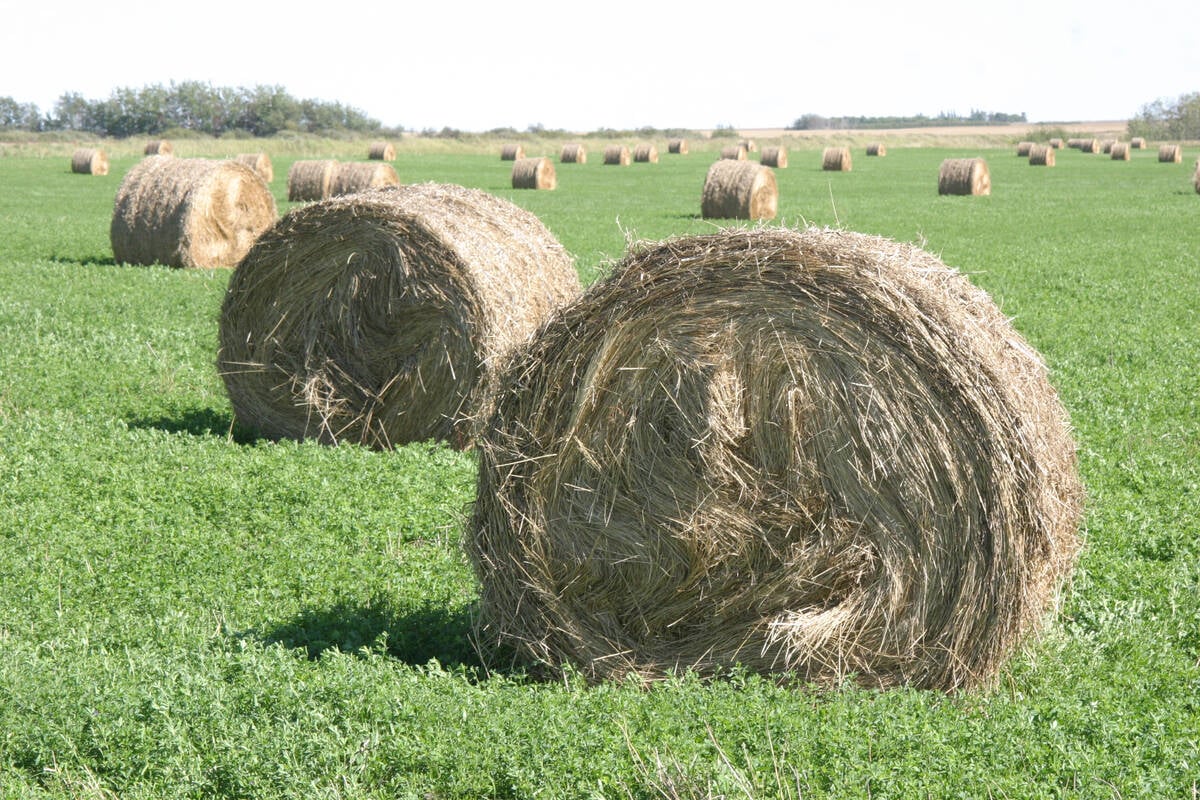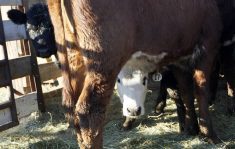A Saskatchewan rancher hopes the premium price paid for his animals at auction will create a greater demand for his calves with a special tenderness gene.
Gerry Duckworth of Courval credits the star six DNA technology that ensures a tender steak as the reason his 400 Black Angus calves topped the market at Swift Current Feb. 22.
“They brought seven cents more than anything else,” said Duckworth.
A group of 101 steers, weighing 699 pounds sold for $112.50 per hundredweight. A heavier lot of 771 lb. steers sold for $103.50 per cwt. A group of 59 heifers weighing 607 lb. sold for $104.25 and another lot of 669 lb. heifers sold for $97.
Read Also

Breaking down successful winter feeding into six steps
It’s that time of year when it is important to start planning for a cow herd’s winter feeding program. Here are six steps I think are necessary to consider when getting your feed tested.
Duckworth said he came upon the tenderness gene technology when he bought bulls from Stevenson Basin Ranch in Montana several years ago. The Stevenson ranch discovered some of their cattle had the gene that ensured cattle have tender meat. Some packing plants and high-end restaurants pay extra for cattle that yield tender meat.
Duckworth’s 800 head cattle herd has three bloodlines. Fifteen of the 25 bulls are from the same Basin Payweight sire as the high selling steers and heifers. He also artificially inseminated 500 cows from the same Payweight sire to ensure consistency and the presence of the tenderness gene.
“When you look at them you can’t tell one from the other. We’re basically cloning them,” said Duck-worth.
As more packers recognize the star six technology, Duckworth hopes the cattle will keep bringing a premium either at auction or through his on-farm sales.
Donnie Peacock, auctioneer for Heartland Livestock, said buyers paid a premium for the calves because of their uniformity. Of the animals at auction, 178 were from the same sire.
“Consistency sells.”
Peacock said buyers paid more because they were a single-owner set of cattle, age verified and would likely finish by 13 or 14 months of age.
“It was the first time to town, they were raised by one person and were the same weight. It’s just a very good one-owner set of calves,” said Peacock.
Harry Dalke of Morden, Man., said Duckworth’s steers fit the 700 lb., age-verified criteria, one-owner set of cattle he is looking for in his 3,200 head feedlot.
Good quality cattle that would finish younger than 20 months of age to catch the premium Japanese meat markets are key. The star six technology is a bonus he hopes packers will value.
“I wasn’t specifically zoning in on gene star. Now that it has it, I’ll do further inquiries about that,” he said.
“I hope we’ll be able to drum up some business with the packers. If they know they’re good cattle, they might give you a bit extra. I don’t know if they’re going to really go right out and give you a bunch more because they’re gene star,” said Dalke.
He bought the cattle for his daughter Gwendolyn’s first cattle-feeding product.
“This is her first venture into cattle. We’ll see if we can make some money on these.”














